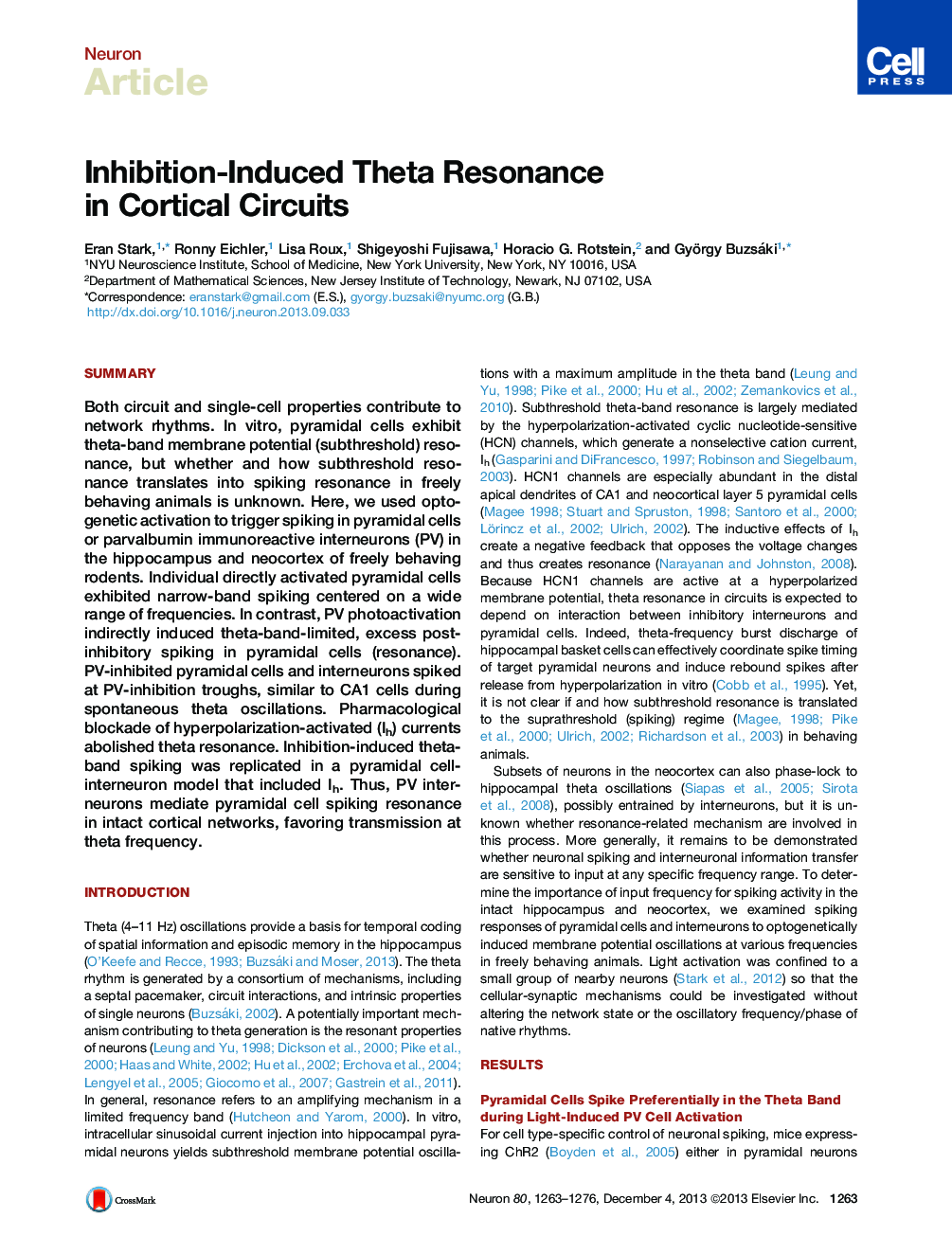| Article ID | Journal | Published Year | Pages | File Type |
|---|---|---|---|---|
| 4321283 | Neuron | 2013 | 14 Pages |
•Wide-band PV photoactivation induces theta-band-limited spiking in pyramidal cells•Pyramidal cells respond at multiple frequencies during direct wide-band activation•Excess postinhibitory rebound spiking is induced by inhibition in pyramidal neurons•Ih is necessary for inhibition-induced spiking resonance
SummaryBoth circuit and single-cell properties contribute to network rhythms. In vitro, pyramidal cells exhibit theta-band membrane potential (subthreshold) resonance, but whether and how subthreshold resonance translates into spiking resonance in freely behaving animals is unknown. Here, we used optogenetic activation to trigger spiking in pyramidal cells or parvalbumin immunoreactive interneurons (PV) in the hippocampus and neocortex of freely behaving rodents. Individual directly activated pyramidal cells exhibited narrow-band spiking centered on a wide range of frequencies. In contrast, PV photoactivation indirectly induced theta-band-limited, excess postinhibitory spiking in pyramidal cells (resonance). PV-inhibited pyramidal cells and interneurons spiked at PV-inhibition troughs, similar to CA1 cells during spontaneous theta oscillations. Pharmacological blockade of hyperpolarization-activated (Ih) currents abolished theta resonance. Inhibition-induced theta-band spiking was replicated in a pyramidal cell-interneuron model that included Ih. Thus, PV interneurons mediate pyramidal cell spiking resonance in intact cortical networks, favoring transmission at theta frequency.
